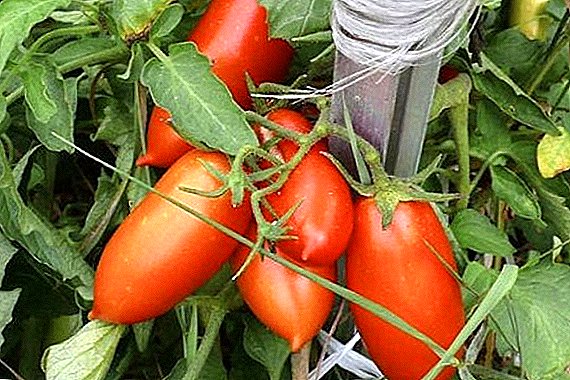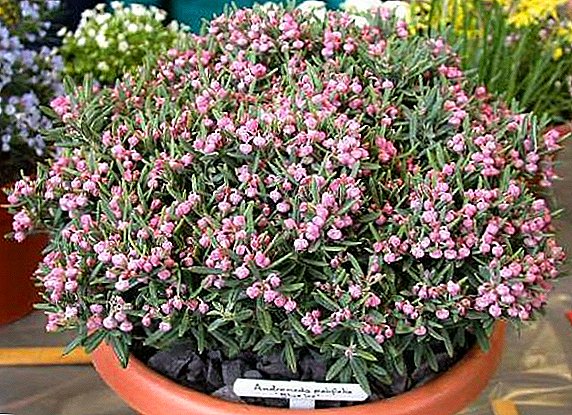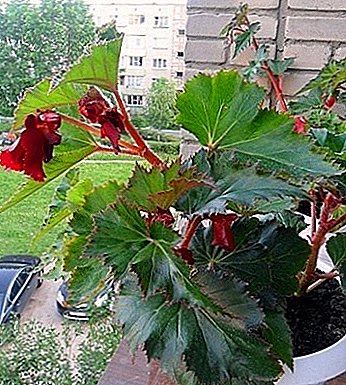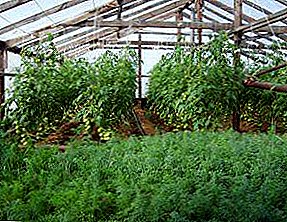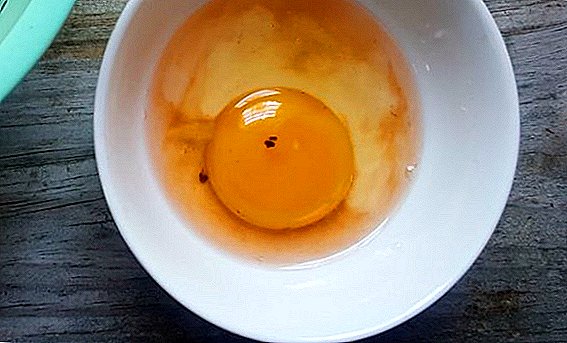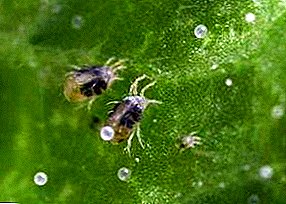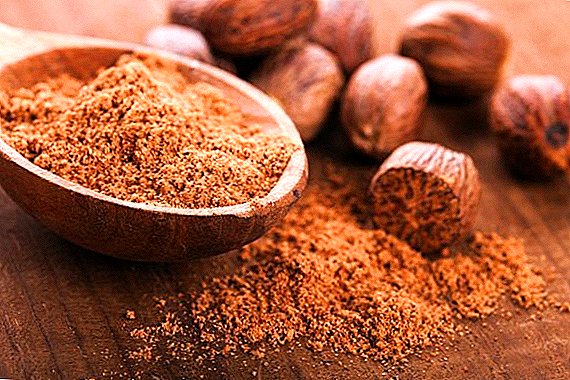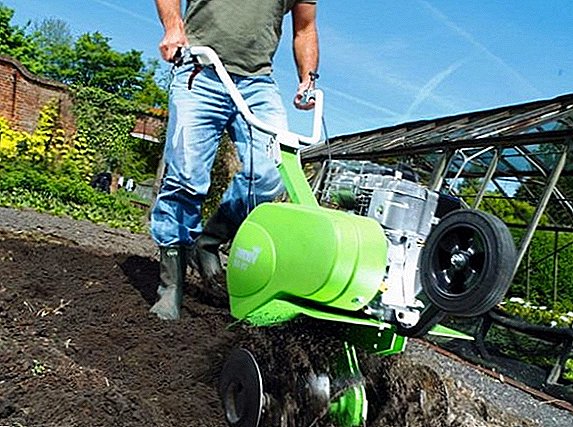 Owners of large areas often look at the "small mechanization." This technique is perfect for cases when manual processing is already burdensome, and the tractor is still closely on the site. Of course, I want such devices to cover many types of work. We learn more about how to choose a suitable cultivator for a large country house.
Owners of large areas often look at the "small mechanization." This technique is perfect for cases when manual processing is already burdensome, and the tractor is still closely on the site. Of course, I want such devices to cover many types of work. We learn more about how to choose a suitable cultivator for a large country house.
Types of cultivators
The market offers a huge number of models of different brands. It’s not always possible to quickly select a suitable aggregate from this variety, therefore we will consider the main types of such mechanisms. Let's start with the simplest.
Hand held
These are the most affordable products that anyone can handle. They have a very simple design that facilitates repairs. 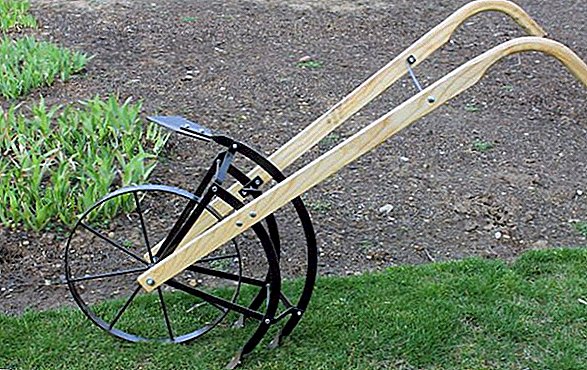 A clear plus is the small dimensions that allow working in almost every corner of the garden (where the motor equipment simply does not work). They are used on Alpine hills, flower beds, near the fence.
A clear plus is the small dimensions that allow working in almost every corner of the garden (where the motor equipment simply does not work). They are used on Alpine hills, flower beds, near the fence.
For cultivating small plots of land, gardeners actively use the Krot shovel and the Tornado hand-held cultivator.
Manual devices are of two types:
- Rotary (they are star). In fact, it is a shaft with discs mounted on it. Thanks to its sharp ends and uneven shape, the cultivator goes well into the ground, lifts it and turns it upside down. The set often includes a weeding knife (weeds are also harvested at the same time). A great option for soft soil and plantations with high beds - cucumbers, potatoes and other crops. Working with them is convenient due to the long handle.

- Rippers. A tool for heavy, clayey lands that a simple asterisk does not already take. The principle is simple - the same handle, but with 3-5 curved sharp teeth. When working, you have to do a large swing and forcefully lower this device to the ground, not forgetting to pull in your direction. They are produced both in the garden version (long handle, 5 teeth), and in lightweight, which is more suitable for greenhouses - it has three small teeth and a short “holder”.
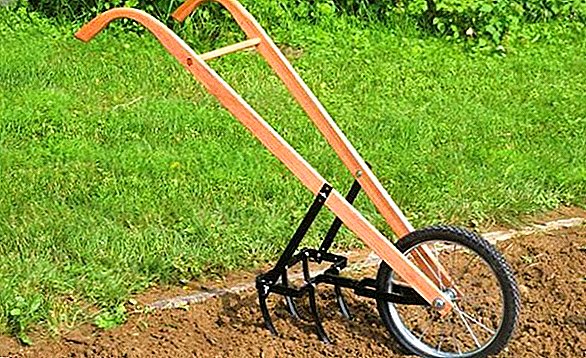
Cultivators
All manufactured constructions of this type can be divided into classes depending on weight and power.
The owners of small, but "densely" developed areas usually look narrowly at maneuverable light vehicles. They are engines 2.5-4.5 hp, and the weight ranges from 20-40 kg.
For the organization of work on the dacha gardener and gardener requires special equipment: lawn mower, plow, snowthrower.
 The ideal “terrain” for such equipment is a dacha of about 10 acres with light and well-groomed soil. As an option, a compact hiller is often offered, cutting into the landing holes.
The ideal “terrain” for such equipment is a dacha of about 10 acres with light and well-groomed soil. As an option, a compact hiller is often offered, cutting into the landing holes.
Among the shortcomings, the need for frequent breaks and a sparing mode of robots is noted - “threshing” without a breather, the motor loses its resource.
Did you know? The legendary "Mole" began to release more than 30 years ago. - in 1983, the first copies left the Moscow factory. A little later, production was mastered in Omsk.From the family of light cultivators also stands out a group of ultra-small devices. Due to their modest size, they are convenient for transportation, but weak (up to 3 hp) motors automatically reduce the plowing depth. For a neglected garden they will not fit, but for the greenhouse will be just right.
 Products of the middle class are already more powerful: 4.5-6 "horses" with a weight of 40-60 kg. They will cope with the clay soil, but it is impossible to plow virgin soil because of simple mechanics. Here (as on the light mechanisms), the cutters play a dual role - they loosen and move the machine forward. Hooking an obstacle, you have to pull the car back a couple of meters.
Products of the middle class are already more powerful: 4.5-6 "horses" with a weight of 40-60 kg. They will cope with the clay soil, but it is impossible to plow virgin soil because of simple mechanics. Here (as on the light mechanisms), the cutters play a dual role - they loosen and move the machine forward. Hooking an obstacle, you have to pull the car back a couple of meters.Facilitates the task of having a backing. The set of equipment is also impressive - in addition to the usual hiller, it can include a mower, a harrow and a plow.
The “top” of the model range of any brand is heavy aggregates (up to 9 hp). In their favor, you can put forward such arguments as large power and plowing depth, the possibility of using as a plow and irrigation pump, as well as for transporting goods. Some models of this segment after connecting with the trailer can safely take out 500-700 kg of cargo. 
Important! Products with internal combustion engines are designed to work outdoors. Having driven such a cultivator into a large greenhouse, you risk destroying plants with harmful exhaust.There are inconveniences. This is, first of all, a lot of weight - from 60 kg (most of them even “jumped” per centner). Some are confused by increased fuel consumption and vibration. True, they are compensated by enviable productivity and long-term work on any soils.
There is another classification - by type of engine and power. On this basis, all manufactured mechanisms of this kind can be divided into the following groups:
- Rechargeable. For our edges it is a rarity. The battery has to be thoroughly charged, and any failures during the “recharge” can significantly reduce the resource.
- Electric. Good cars, but the "range" is limited to the length of the cord. To work with the garden near the house is suitable, while in the open there is little sense from it (unless there is a strong generator at hand).
- With internal combustion engines. The most massive view. There are everywhere - from a small suburban area to the fields. These units should take a closer look, because most often they buy them.



What to look for when choosing a cultivator
Cultivators with internal combustion engines will prefer those who need fast processing of large areas. But before buying it is worth remembering about the features of their device, because it is at such moments that you will have to pay attention when choosing a motolopaty.
Engine
The "heart" of the unit can be 2- or 4-stroke. Each of these types has its own characteristics. For example, two-stroke engines:
- More available.
- More powerful than four-tactics of the same dimensions.
- Reliable and maintainable.
- Inexpensive during normal maintenance.
Did you know? There is also a "forest" variety of such systems, suitable for the most difficult conditions. - abundance of stumps and stony soils. It is curious that the vast majority of these units are produced by the efforts of one firm, the Swedish "Bracke forest".It is these motors that are often bought by those who solve the problem - how to choose a good and easy gasoline cultivator to give.
 But there are some nuances. Perhaps the main one is the choice of fuel and competent preparation of the mixture. You need to buy high-quality gasoline ("A-95") and mix it with suitable oil strictly according to the instructions. Some neglect this simple rule and pour "ninety-second" in combination with the oil from the barrel in the garage. As a result, the cultivator can go to landfill - repairs are quite expensive.
But there are some nuances. Perhaps the main one is the choice of fuel and competent preparation of the mixture. You need to buy high-quality gasoline ("A-95") and mix it with suitable oil strictly according to the instructions. Some neglect this simple rule and pour "ninety-second" in combination with the oil from the barrel in the garage. As a result, the cultivator can go to landfill - repairs are quite expensive.Four cycles is a lot of medium and heavy units. They:
- Have a great resource.
- Work quieter and longer.
- Do not require long stops for cooling. Enough and a few minutes.
- It is better to deepen the cutters (affects a lot of weight).
- Do not require regular pouring the mixture.
Important! Do not hold the cultivator with the cutters in front - you have to hold the handle with both hands and with great effort, not forgetting to adjust the depth of plowing. Light versions, in turn, can goat on solid ground, and will have to push on top.We already know about the direct dependence of the processing depth on the engine power. But it affects the area of "capture". So, for a couple of hectares 5-7 hp will be enough. Larger areas (4-5 hectares) will require at least a 9-horsepower engine. In the small garden you can get by with 3-4 “horses”.
Gearbox
Equally important is the transfer of torque from the motor to the wheels or working mechanisms through the clutch. A special role is assigned just to the gearbox - in many respects the reliability of the whole unit and its layout as a whole depends on it.  A lot of controversy is caused by the problem, which type of reducer is better, a popular chain or a small worm. We will try to clarify, not forgetting about other options.
A lot of controversy is caused by the problem, which type of reducer is better, a popular chain or a small worm. We will try to clarify, not forgetting about other options.
Features of chain transmission:
- It is placed on engines with a horizontal crankshaft.
- It has a great resource.
- Can be solid or collapsible. In the second case, it is much easier to maintain this unit (the damage can be fixed with your own hands).
- Suffers "family" problems such as sprains and cliff breaks. Sprockets can also be damaged, and in some cases reach the key off the drive shaft. Although all these faults are easily fixed.
- It has low weight and small dimensions.
- Used only on lightweight models.
Did you know? German company "Bungartz" In 1937, she began producing power tillers with engines of 8 and 10 forces. During the war years, this brand, despite the "registration", had to withstand the onslaught of the Nazis - its leaders refused to fulfill military orders, releasing purely peaceful products.As you can see, he has few advantages, which cannot be said about the disadvantages of such a gearbox. It does not tolerate heavy loads - the plow, and even more so, the trailer is no longer fit. Brass gear wears quickly, and the output shaft often gives a backlash. "Inherent" features are considered the "tendency" to overheat and large friction losses.
 Moreover, it is necessary to apply considerable force - pushing the whole mechanism, you can feel that the wheels do not turn even when the clutch is engaged. His "squeezing" also does not always give the result.
Moreover, it is necessary to apply considerable force - pushing the whole mechanism, you can feel that the wheels do not turn even when the clutch is engaged. His "squeezing" also does not always give the result.It is possible to recommend this option only to those who will deal with well-groomed light soil.
The most powerful cultivators are equipped with a gear reducer. They are not an example more expensive, but the resource they have much longer. Work with almost any load.  The original, but rather rare gear-chain "hybrid" is cheaper. This is a kind of compromise between the reliability of durable gear and the simplicity of the chain. Convenient, but to serve such a bundle without skill is sometimes difficult.
The original, but rather rare gear-chain "hybrid" is cheaper. This is a kind of compromise between the reliability of durable gear and the simplicity of the chain. Convenient, but to serve such a bundle without skill is sometimes difficult.
Clutch
No such mechanism can do without it. The following schemes are used:
- Centrifugal automation, similar to the one that is not used chainsaws. Used on lightweight units, easy to change in garage conditions;
Important! Ask about the materials from which the power units and systems are made. High-strength steel is suitable for such purposes, while brass gears will not last long.
- The belt with a tension roller is found on models of the middle segment.
- System with clutch release clutch "automotive" type. This is typical of the most powerful copies. Loads there are big, and the drums with the belts can not cope. The disadvantage is the complexity of the repair and assembly.

Plowing width and depth
It is on these parameters that future owners immediately pay attention. These figures will differ depending on the class of the cultivator:
- Small products will “capture” a maximum of half a meter with a loosening depth of 15-18 cm. Micro models will be mastered no more than 30 cm, burying up to 7-8 cm.
- Devices of the middle segment can be adjusted to a width in the range of 40-80 cm (for some it is increased to 85). Hilling takes place at depths of 23-28 cm.
- Heavy versions are designed for penetration of 0.9-1 m and a depth of at least 30 cm.
 To avoid overloads, its power is selected as follows:
To avoid overloads, its power is selected as follows:- 1 hp / 20 cm grip for the four-stroke.
- 1 hp / 30 cm for 2-stroke.
Presence of reverse
His presence will be only a plus. The possibility of reversing is the “privilege” of large cultivators, although quite a few middle-segment machines also have this option.
Did you know? In the USSR, mini-tractor began to appear on the eve of 1980 - before the Olympics, a batch of Czech machines TZ-4K was purchased. They were so successful that they were used everywhere: from cleaning the streets to working in the fields.The gearbox is most often designed for three modes: plowing at low speeds (100-150 / min), high-speed loosening of the surface and destruction of the weed (250-300 rpm) and, in fact, reverse.
On light models, portable handles can be seen - they don’t need an extra load of the transmission, and the movement can be done manually.
Handle rotation
At the end of the curved tubes are controls in the form of handles. They are responsible for engaging the clutch, driving speed and shifting gears.  There are few requirements for them. They should be comfortable (preferably rubberized) and in good condition. “Jamming” and loose fasteners are excluded.
There are few requirements for them. They should be comfortable (preferably rubberized) and in good condition. “Jamming” and loose fasteners are excluded.
Before buying, look at how well the cables on the handle are protected. Quickly getting there dirt can complicate the work.
Important and correct adjustment of the handle without unduly free running. For example, a “stretched” clutch cable can be detected only when the handle is intact - if it is still squeezed and the unit is already twitching forward, you will have to tackle this problem (by analogy with a motorcycle).
Attachment Equipment
In addition to the standard cutter, the optional set of "canopies" may include such devices:
- The strengthened propashny mills for heavy sites.
- Wheel or wheels (for axle models), which facilitate movement and do not allow to "break in" into the ground.


Important! To enter the aisle, a set of special, so-called narrow cutters is required.
- V-shaped plowshare (hiller), which pierce the holes for planting and loosen the ground near the plants.
- Plows of different configurations (single or double sided).
- Potato digger. The same plow, but with its own specifics. Undermining the tubers, pulls them out. It is offered only for powerful models.
- Harrow.
- Cutters and piles for cleaning old leaves and snow.
- Grousers and wheel weighting.
- Mowing machine
- Trolley or small trailer.







Familiarize yourself with the technical characteristics of the Neva MB 2, Salyut 100 and Zubr JR-Q12E motoblocks.
Cultivator tips
In addition to the usual list of equipment, the buyer may offer other, more "specialized" devices. These include:
- Aerator A fairly rare nozzle, piercing the ground for air access to the roots.
- Easy rake to work on flat pieces like a lawn.
- Scissors in the form of scissors.


Did you know? The means of small-scale mechanization in the Soviet period were valued very highly, and in many regions they were lacking. To calculate the need for them, high authorities like the State Planning Committee and the State Construction Committee issued detailed circulars, dazzling with sophisticated formulas.
- "Corner" knives for working along the edges of lawns.
Popular manufacturers
In order not to "run into a leftist", pay attention to the products from proven manufacturers. Products of the following brands are deservedly popular:
- "Mole". The design is familiar from Soviet times. Small-sized, easy-to-manage model, capable of loosening by 20-25 cm without any special difficulties. The small size allows you to transport the device even in the trunk of a car.
- "Neva" ruler MK-100 cope with loosening, weeding and fertilization. Imported power units have a great resource. The service network is well developed, so there are no problems with spare parts.
- "Tarpan". The small-sized unit is equipped with a 6-horsepower American Briggs & Stratton motor, which makes it suitable for working with heavy loams. Note also moderate "fuel" appetites.
- "Viking". The universal axial device from Austria is distinguished by an excellent fit of parts and materials with increased strength. The body is made with double polymer linings, and the "worm" is made of resistant steel. Transmission control levers are equipped with a lock, which eliminates the simultaneous operation in two modes. Domestic analogue of the model 585 is called "Tarpan".




Important! Periodically check the presence of oil in a collapsible gearbox.
- Danish "Texas " able to take any type of equipment and copes with all types of cultivation on different soils. Requires competent care - some nodes can be difficult to get.





